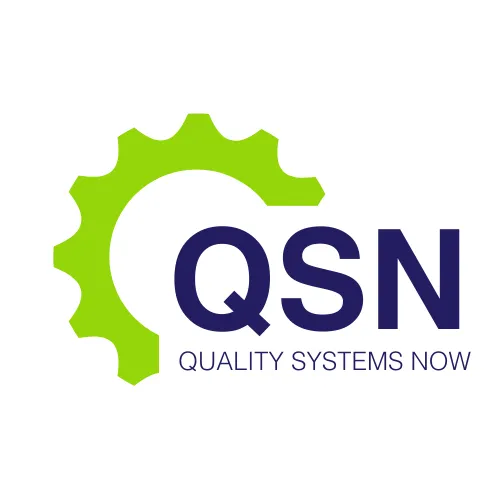NEWS

If Your Team Can’t Understand Your SOPs, How Can You Expect Compliance?
Standard Operating Procedures (SOPs) are the lifeblood of any organization striving for consistency, quality, and compliance. They provide a clear roadmap for employees to follow, ensuring that tasks are performed correctly and efficiently. However, if your team cannot understand your SOPs, achieving compliance becomes an uphill battle. Poorly written or overly complex SOPs can lead to confusion, errors, and non-compliance, putting your organization at risk of regulatory penalties, operational inefficiencies, and reputational damage. In this article, we’ll explore why clarity in SOPs is critical, the common issues that make SOPs difficult to understand, and practical steps to create SOPs that your team can easily follow.
Quality Systems Now can help you with Your Team Training Requirements
The Importance of Clear and Understandable SOPs
SOPs are more than just documents—they are tools that guide your team in performing their duties in alignment with organizational goals and regulatory requirements. When SOPs are clear and easy to understand, they:
Ensure Consistency: Clear SOPs help standardize processes across the organization, reducing variability and ensuring that tasks are performed the same way every time.
Enhance Compliance: Well-written SOPs make it easier for employees to follow regulatory requirements, reducing the risk of non-compliance.
Improve Efficiency: When employees understand SOPs, they can complete tasks more quickly and accurately, boosting productivity.
Reduce Errors: Clear instructions minimize the likelihood of mistakes, which can be costly in terms of time, resources, and compliance.
Facilitate Training: Understandable SOPs serve as effective training tools for new hires, helping them get up to speed quickly.
On the other hand, when SOPs are unclear or overly complex, they can have the opposite effect, leading to confusion, frustration, and non-compliance. If your team struggles to interpret or follow SOPs, it’s a sign that your documentation needs improvement.
Common Issues That Make SOPs Difficult to Understand
Several factors can contribute to the lack of clarity in SOPs. Identifying these issues is the first step toward creating better documentation. Here are some of the most common problems:
1. Overly Technical Language
While some technical terms may be necessary, using too much jargon or complex language can alienate readers. SOPs should be written in plain, straightforward language that everyone can understand, regardless of their technical expertise.
2. Lack of Structure
SOPs that are poorly organized or lack a logical flow can be difficult to follow. Without clear headings, subheadings, and numbered steps, employees may struggle to find the information they need.
3. Ambiguity
Vague or ambiguous instructions leave room for interpretation, which can lead to inconsistent practices and errors. SOPs should be specific and leave no room for doubt.
4. Lengthy and Overly Detailed
While detail is important, overly lengthy SOPs can overwhelm readers. Employees may skip sections or miss critical information if the document is too dense.
5. Outdated Information
SOPs that haven’t been updated to reflect current processes or regulations can cause confusion and non-compliance. Outdated SOPs may include irrelevant steps or omit important changes.
6. Lack of Visual Aids
Text-heavy SOPs can be challenging to digest, especially for visual learners. The absence of diagrams, flowcharts, or images can make it harder for employees to understand complex processes.
How to Create SOPs Your Team Can Understand
Creating clear and effective SOPs requires a thoughtful approach. Here are some practical steps to ensure your SOPs are easy to understand and follow:
1. Know Your Audience
Before writing an SOP, consider the knowledge and experience level of your team. Use language and terminology that your audience will understand. If technical terms are necessary, provide definitions or a glossary.
2. Use a Clear and Consistent Format
Adopt a standardized format for all SOPs to ensure consistency. Use headings, subheadings, and bullet points to break up text and make the document easier to navigate. Numbered steps are particularly useful for procedural instructions.
3. Keep It Simple
Avoid unnecessary complexity. Write in short, clear sentences and focus on the essential information. If a process is particularly complex, consider breaking it down into smaller, more manageable sections.
4. Be Specific
Provide clear, step-by-step instructions that leave no room for interpretation. Include details such as who is responsible for each step, what tools or resources are needed, and any potential pitfalls to avoid.
5. Incorporate Visual Aids
Use diagrams, flowcharts, and images to complement written instructions. Visual aids can help clarify complex processes and make SOPs more engaging and easier to understand.
6. Review and Update Regularly
SOPs should be living documents that evolve with your organization. Regularly review and update them to reflect changes in processes, technology, or regulations. Encourage feedback from your team to identify areas for improvement.
7. Test Your SOPs
Before finalizing an SOP, test it with a small group of employees to ensure it’s clear and easy to follow. Observe how they use the document and ask for their feedback. Make adjustments as needed to address any confusion or gaps.
8. Provide Training
Even the clearest SOPs may require some explanation. Provide training sessions to walk your team through new or updated SOPs. Use real-life examples and hands-on exercises to reinforce understanding.
9. Make SOPs Accessible
Ensure that SOPs are easily accessible to all employees. Store them in a centralized location, such as a digital document management system, where they can be quickly retrieved and updated as needed.
The Role of Technology in Simplifying SOPs
Technology can play a significant role in improving the clarity and accessibility of SOPs. Document management systems (DMS) and workflow automation tools can help streamline the creation, distribution, and updating of SOPs. These tools often include features such as version control, search functionality, and user permissions, making it easier for employees to find and follow the most up-to-date procedures.
Additionally, interactive digital SOPs can enhance understanding by incorporating multimedia elements, such as videos or clickable diagrams. These features can make complex processes more intuitive and engaging for employees.
Conclusion
If your team can’t understand your SOPs, compliance becomes an impossible goal. Clear, well-structured, and accessible SOPs are essential for ensuring that employees can perform their tasks correctly and consistently. By addressing common issues such as overly technical language, lack of structure, and outdated information, you can create SOPs that your team can easily follow.
At Quality Systems Now, we understand the importance of effective SOPs in achieving compliance and operational excellence. Our team of experts can help you develop, review, and optimize your SOPs to ensure they meet the needs of your organization and your team. Don’t let unclear SOPs stand in the way of compliance—take the necessary steps to create documentation that empowers your team and drives success.
